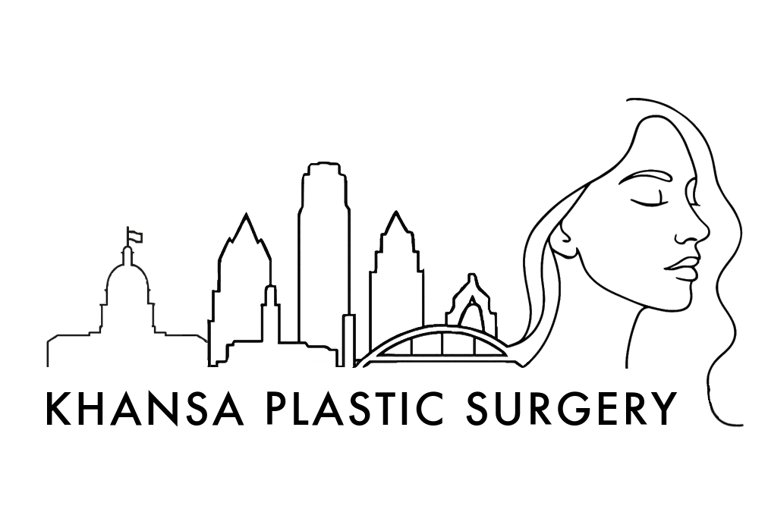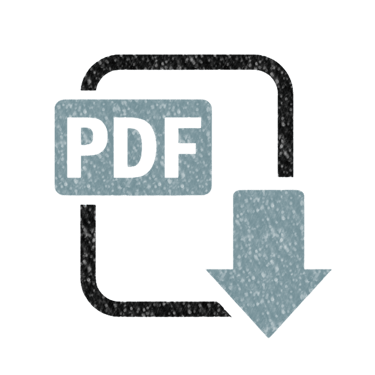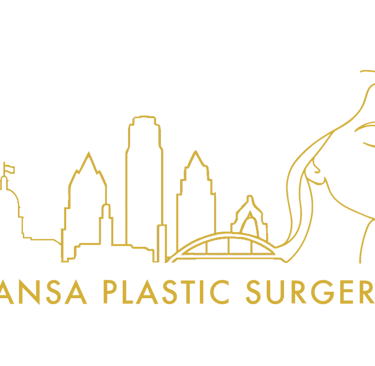About Dr. Khansa
"If you are looking for a surgeon who will not only provide exceptional medical care but also truly advocate for his patients, Dr. Khansa is the one you want by your side."
-Kim H.


Dr. Khansa loves his patients, and is proud to offer them personalized, concierge-level service. He is board-certified by the American Board of Plastic Surgery, and is trained to provide excellent care to both adults and children.
Jump to section
Dr. Khansa in the news
Education and training
-Undergraduate: BS in Biomedical Engineering - The University of Wisconsin - Madison
-Medical school: MD - Harvard Medical School, Boston, MA
-Residency: Plastic and Reconstructive Surgery - The Ohio State University Wexner Medical Center, Columbus, OH
-Fellowship: Craniofacial and Pediatric Plastic Surgery - University of Southern California and Children's Hospital Los Angeles, Los Angeles, CA
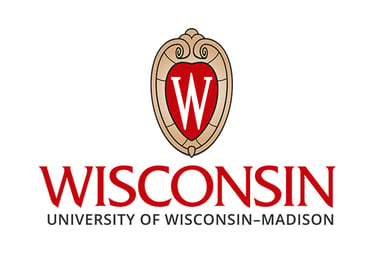

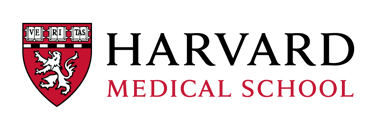



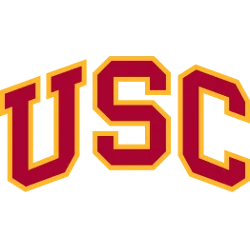

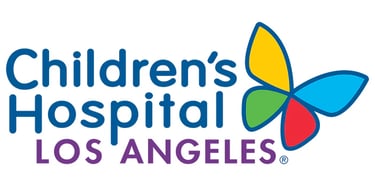

Board certification
Dr. Khansa is certified by the American Board of Plastic Surgery (ABPS). Why is that important? Certification by the ABPS requires completion of a plastic and reconstructive surgery residency, and passing rigorous written and oral examinations. Only plastic surgeons who have satisfied nationally recognized standards of safety and skill obtain ABPS certification.
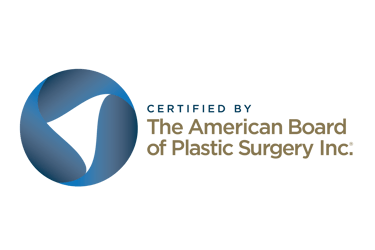

Research and publications
Dr. Khansa is an internationally-acclaimed researcher in plastic surgery. He has published more than 70 peer-reviewed research articles and 17 textbook chapters, and given more than 100 national and international presentations. See some of his publications below:
Patient Satisfaction After Rhinoplasty: A Social Media Analysis
Dr. Khansa and his colleagues perform an analysis of social media posts in order to determine factors that predict patient satisfaction after rhinoplasty. They find that female patients tend to have higher satisfaction than male patients.
The Current Means for Detection of Migraine Headache Trigger Sites
Dr. Khansa and his colleagues summarize the ways to diagnose and localize migraine trigger sites in preparation for migraine surgery. These include a thorough history and physical examination, diagnostic blocks, botulinum toxin injections, Doppler signals and possibly CT scans
Strategies for Postoperative Seroma Prevention: A Systematic Review
Dr. Khansa and his colleagues evaluate techniques to decrease the risk of seroma after plastic surgery, including drains, progressive tension sutures, and using sharp dissection. Such strategies are especially relevant in abdominoplasty and other body contouring procedures.
Simultaneous Midface Advancement and Orthognathic Surgery: A Powerful Technique for Managing Midface Hypoplasia and Malocclusion
Dr. Khansa and his colleagues evaluate the outcomes of midface surgery (LeFort 3 advancement) combined with orthognathic surgery (LeFort 1 and BSSO) to treat patients who have underbite and a flat midface. They find the technique to be effective and safe.
Evidence-Based Scar Management: How to Improve Results with Technique and Technology
Dr. Khansa and his colleagues evaluate the published literature to determine the effectiveness of various methods to improve scar appearance. They find good surgical technique (edge eversion and tension reduction), silicone, sun protection and scar massage to be the most effective interventions.
Evidence-Based Strategies to Reduce Postoperative Complications in Plastic Surgery
Dr. Khansa and his colleagues summarize the most important interventions to decrease the risk of complications after plastic surgery. These include establishing trust and communication between patient and surgeon, evidence-based antibiotic use, optimization of nutrition, absolute smoking/nicotine cessation, tight glucose control, incentive spirometry, sequential compression devices and early ambulation.
A Primer for Success as an Early Career Academic Plastic Surgeon
Dr. Khansa and his colleagues summarize important steps that a new plastic surgeon must follow in order to achieve academic success, including developing a research identity (with funding, if necessary), identifying mentors, and striving to educate the next generation of surgeons.
Aesthetic outcomes in Women Undergoing Breast-Conserving Therapy Followed by Mastectomy and Microsurgical Reconstruction
Dr. Khansa and his colleagues evaluate the aesthetic outcomes of patients who had lumpectomy and radiation therapy, but then went on later to have mastectomy and breast reconstruction. They found that mastectomy and breast reconstruction result in superior aesthetic outcomes compared to lumpectomy and radiation therapy.
Airway and Feeding Outcomes in Pierre Robin Sequence: A Comparison of Three Management Strategies
Dr. Khansa and his colleagues compare the improvements in breathing and growth in babies with Pierre-Robin sequence who had mandibular distraction osteogenesis (MDO), tongue-lip adhesion (TLA), and non-surgical management. They find that MDO results in the greatest improvement in breathing, and the lowest rate of gastrostomy tube for feeding.
A Case Series of the Use of Piezosurgery Instrument for Minimally Invasive Metopic Suturectomy
Dr. Khansa and his colleagues demonstrate the safety and efficacy of the piezosurgery saw for suturectomy in metopic craniosynostosis.
A Formidable Foe Is Sabotaging Your Results: What You Should Know about Biofilms and Wound Healing
Dr. Khansa and his colleagues investigate the risk of biofilms in chronic wounds. They describe strategies to eradicate biofilm to accelerate wound healing.
A Growing Epidemic: Plastic Surgeons and Burnout - A Literature Review
Dr. Khansa and his colleague investigate the risk factors for burnout among plastic surgeons. Strategies to avoid burnout include engaging in regular exercise, acquiring more autonomy at work, finding purpose in life/work, developing positive relations with others, and finding trusted mentors.
A Novel Splinting Technique to Protect Flaps of the Posterior Lower Extremity
Dr. Khansa and his colleague present an innovative method to protect flaps used to reconstruct the lower extremity. Such flaps are at risk of compression, and the new splinting technique can help prevent that.
A Systematic Approach to Emergent Breast Free Flap Takeback: Clinical Outcomes, Algorithm, and Review of the Literature
Dr. Khansa and his colleagues analyze strategies used to salvage microsurgical flaps suffering ischemic complications. Such techniques include anastomotic revision, local heparin irrigation, systemic heparin infusion, Fogarty catheter thrombectomy, intraarterial thrombolytics, and indocyanine green angiography.
Abdominal Wall Reconstruction Using Retrorectus Self-adhering Mesh: A Novel Approach
Dr. Khansa and his colleagues describe the use of a novel mesh in hernia repair. The mesh has self-adhering microgrips, and is able to be placed without requiring transfascial sutures. This results in lower postoperative pain.
Abdominal Wall Reconstruction with Retrorectus Self-Adhering Mesh: A Single-Center Long-Term Follow-Up
Dr. Khansa and his colleagues describe long-term outcomes of self-adhering mesh in hernia repair. The technique exhibits excellent outcomes and decreases pain levels.
Airway and Feeding Outcomes of Mandibular Distraction, Tongue-Lip Adhesion, and Conservative Management in Pierre Robin Sequence: A Prospective Study
Dr. Khansa and his colleagues analyze the effects of mandibular distraction osteogenesis (MDO), tongue-lip adhesion (TLA) and conservative management on breathing and feeding in newborns with Pierre-Robin sequence. They find that MDO results in the greatest improvement in breathing.
Analysis of Factors Contributing to Severity of Breast Cancer-Related Lymphedema
Dr. Khansa and his colleagues analyze risk factors that determine the severity of lymphedema after the treatment of breast cancer. They find that the severity of lymphedema increases in women who had axillary lymph node dissection, radiation therapy, chemotherapy, and women who are older and with more advanced breast cancer.
Breast Reconstruction with Tissue Expanders: Implementation of a Standardized Best-Practices Protocol to Reduce Infection Rates
Dr. Khansa and his colleagues describe a protocol that decreases the risk of infection after breast reconstruction with tissue expanders. The protocol includes meticulous sterile technique and standardized postoperative management, and successfully reduces infection rates.
Comment to: Post Operative Pain Associated with ProGrip Mesh Hernioplasty
Dr. Khansa and his colleague discuss an article on the use of self-adhering mesh in inguinal hernia repair. Dr. Khansa and his colleague had previously published an article on the use of the same mesh in abdominal hernia repair, and similar results of decreased postoperative pain were obtained.
Coping and Recovery in Surgical Residents after Adverse Events: The Second Victim Phenomenon
Dr. Khansa and his colleague describe the psychological events that affect physicians after an adverse medical event. Residents are at particularly high risk of the second victim phenomenon. Physicians must learn from the adverse event, and become safety advocates in order to thrive and better serve their patients.
Work-Related Musculoskeletal Injuries in Plastic Surgeons in the United States, Canada, and Norway
Dr. Khansa and his colleagues compare the risk of surgery-related injuries in surgeons in 3 countries. They find that surgeons in the United States are at higher risk of injury than surgeons in Norway. Surgeons must learn to apply ergonomic principles during surgery in order to decrease the risk of injury.
Use of Antibiotic-Impregnated Resorbable Beads Reduces Pressure Ulcer Recurrence: A Retrospective Analysis
Dr. Khansa and his colleagues investigate the use of absorbable beads containing antibiotics for the treatment of pressure ulcers with osteomyelitis. They find that the use of beads reduces the risk of pressure ulcer recurrence after flap surgery.
Timing of Prophylactic Hysterectomy-Oophorectomy, Mastectomy, and Microsurgical Breast Reconstruction in BRCA1 and BRCA2 Carriers
Dr. Khansa and his colleagues study whether mastectomy and breast reconstruction should be performed before or after hysterectomy and oophorectomy in women with a BRCA mutation. They find that the order of the procedures does not affect complication rates.
The Differential Impact of Plastic Surgery Subspecialties on the Financial Performance of an Academic Clinical Practice
Dr. Khansa and his colleagues examine the financial contributions of various subspecialties in an academic plastic surgery practice. They find that, during the study period, breast reconstruction exhibited the greatest growth in revenues.
The 4 Principles of Complex Abdominal Wall Reconstruction
Dr. Khansa and his colleague describe an evidence-based approach to optimize outcomes in complex hernia repair. This approach includes careful patient selection, preoperative optimization, sound surgical technique with special attention to the skin and subcutaneous tissue, and postoperative optimization.
Surgeon Reimbursements in Maxillofacial Trauma Surgery: Effect of the Affordable Care Act in Ohio
Dr. Khansa and his colleagues examine the effects of the Affordable Care Act (ACA) on payor mix and reimbursements in facial trauma surgery. They find a decrease in the percentage of patients who are uninsured, and an increase in reimbursement.
Strategies for Mesh Fixation in Abdominal Wall Reconstruction: Concepts and Techniques
Dr. Khansa and his colleagues present evidence-based techniques for the fixation of mesh in complex hernia repair. They discuss the advantages and disadvantages of various techniques, including sutures, tacks, fibrin glue, mesh strips, and self-adhering mesh.
Spring Cranioplasty: Incorporation Into Practice
Dr. Khansa and his colleagues describe spring cranioplasty, a minimally-invasive technique for the management of craniosynostosis in infants.
Silver in Wound Care - Friend or Foe? A Comprehensive Review
Dr. Khansa and his colleagues discuss the evidence for and against the use of silver-containing dressings in the treatment of chronic wounds
Reply: Work-Related Musculoskeletal Injuries in Plastic Surgeons in the United States, Canada, and Norway
Dr. Khansa and his colleagues discuss their article on ergonomics and injuries in plastic surgeons
Reconstructive Management of Devastating Electrical Injuries to the Face
Dr. Khansa and his colleagues describe several cases of severe electrical burns of the face. Management options for these injuries, including facial transplantation, are discussed.
Practical Management of Pilonidal Disease
Dr. Khansa and his colleagues describe surgical and nonsurgical options for the management of pilonidal cysts and pilonidal disease.
Functional Outcomes Between Headache Surgery and Targeted Botox Injections: A Prospective Multicenter Pilot Study
Dr. Khansa and his colleagues compare botulinum toxin to surgery in the management of intractable migraine headaches. They find that surgery is more effective at reducing migraine pain intensity than botulinum toxin.
Discussion: Greater Occipital Nerve Block for the Treatment of Chronic Migraine Headaches: A Systematic Review and Meta-Analysis
Dr. Khansa and his colleague discuss a meta-analysis of the use of local anesthetic blocks for the treatment of occipital migraines.
Evidence-Based Abdominal Wall Reconstruction: The Maxi-Mini Approach
Dr. Khansa and his colleague present the maxi-mini approach, which is a comprehensive method of evaluating and treating patients with large abdominal hernias. The approach is evidence-based, and results in excellent outcomes, with low rates of infection and hernia recurrence.
Reply: Evidence-Based Scar Management: How to Improve Results with Technique and Technology
Dr. Khansa and his colleagues present reply to a discussion of their article about scar management. They discuss the utility and safety of fat grafting for scars.
Evidence-Based Strategies for the Prehabilitation of the Abdominal Wall Reconstruction Patient
Dr. Khansa and his colleagues describe their approach for the optimization of high-risk patients who are being prepared for hernia repair. The goal is to address modifiable risk factors such as obesity, smoking, hyperglycemia, and malnutrition.
Prospective Evaluation of Health-Related Quality-of-Life in Children with Craniosynostosis
Dr. Khansa and his colleagues evaluate long-term neurocognitive and quality of life outcomes in children who have undergone surgery for craniosynostosis. They find that the best quality of life outcomes occurred in children who underwent posterior vault distraction and minimally-invasive surgery.
Letter to the Editor Regarding: The Use of Surgical Site Drains in Breast Reconstruction: A Systematic Review
Dr. Khansa and his colleagues comment on a systematic review that evaluates the utility of drains in breast reconstruction, reviewing the evidence for seroma prevention.
Pediatric Lawnmower Injuries: a 25-year Review
Dr. Khansa and his colleagues describe 142 children who sustained injuries from lawnmowers over a period of 25 years. These injuries resulted in a 38% rate of amputation. Prevention of lawnmower injuries is discussed in depth.
Fat Necrosis in Autologous Abdomen-Based Breast Reconstruction: A Systematic Review
Dr. Khansa and his colleagues evaluate risk factors for fat necrosis in breast reconstruction, including obesity, radiation, smoking, abdominal scars, and unilateral reconstruction.
Commentary on: Short-term Satisfaction, Psychosocial Impact, and Complication Profile of Reduction Mammaplasty During Adolescence
Dr. Khansa and his colleagues comment on a study evaluating breast reduction in adolescent females. The study reveals that breast reduction can have significant physical and psychological benefits on those patients
Postmastectomy Breast Reconstruction After Previous Lumpectomy and Radiation Therapy Analysis of Complications and Satisfaction
Dr. Khansa and his colleagues analyze the outcomes of patients with a history of prior breast-conserving therapy, who underwent subsequent mastectomy and breast reconstruction. They find that those patients are at higher risk of mastectomy skin flap necrosis.
Commentary Regarding: Abdominal Wall Reconstruction and Patient Comorbidities
Dr. Khansa and his colleague discuss an article that analyzes complications after complex hernia repair. They present evidence-based strategies to optimize patient outcomes.
Mental Health and Wellness Among Plastic Surgeons During Oral Board Certification Examination Preparation
Dr. Khansa and his colleagues present strategies to maintain psychological wellbeing in new plastic surgeons as they prepare for their oral board examination.
Processes of Care in Breast Reconstruction and the Long-Term Impact of a Comprehensive Breast Center
Dr. Khansa and his colleagues evaluate the impact of building a comprehensive breast center on quality of care in patients with breast cancer. During the study period, the proportion of women with breast cancer who underwent breast reconstruction increased, and the time delay from consultation to surgery decreased.
Complex Open Abdominal Wall Reconstruction: Management of the Skin and Subcutaneous Tissue
Dr. Khansa and his colleague discuss the optimal soft tissue management in patients undergoing hernia repair, including preservation of vascularity, dead space obliteration, and optimal skin closure.
Effects of the Affordable Care Act on Payer Mix and Physician Reimbursement in Hand Surgery
Dr. Khansa and his colleagues analyze the effects of the Affordable Care Act on access and reimbursements in hand surgery. They find that the rate of uninsured patients decreased, but the overall reimbursement rate did not change.
Impact of Complications on Patient Satisfaction in Breast Reconstruction
Dr. Khansa and his colleagues analyze predictors of satisfaction after breast reconstruction. They find that satisfaction decreases in patients who have a complication, are older, receive implant-based reconstruction, and have a prophylactic mastectomy.
Outcomes in Velopharyngeal Dysfunction Treatment: Comparing Two Approaches for Pharyngeal Flaps
Dr. Khansa and his colleagues compare the success rates of posterior pharyngeal flaps inset using the palatal-split technique versus the fish-mouth technique. They find that the fish-mouth technique results in better outcomes.
Pain Management in Abdominal Wall Reconstruction
Dr. Khansa and his colleagues present strategies for optimal pain management in hernia repair. These include epidural analgesia, opioid minimization, multimodal analgesia, and self-adhering mesh.
Computerized Segmentation and Measurement of Chronic Wound Images
Dr. Khansa and his colleagues demonstrate the use of computer software to measure and characterize wounds
Discussion: Gearing Effect in Clockwise Rotational Orthognathic Surgery
Dr. Khansa and his colleague discuss an article on posterior maxillary impaction and clockwise rotation in Asian patients undergoing orthognathic surgery. They emphasize the importance of careful patient selection in order to achieve good outcomes.
Factors Associated with Delayed Palatoplasty Before, During, and After the COVID-19 Pandemic
Dr. Khansa and his colleagues analyze factors that caused delay in cleft palate repair during the Covid pandemic. They found significant delays in patients from underserved communities, such as Hispanic patients, and those without insurance.
Optimal Pain Control in Abdominal Wall Reconstruction
Dr. Khansa and his colleagues discuss strategies to improve pain control in patients undergoing complex hernia repair. These strategies include using non-narcotic medications, using epidural analgesia and local analgesia, and using self-adhering mesh.
Cost-Effectiveness of Long-Term, Targeted OnabotulinumtoxinA versus Peripheral Trigger Site Deactivation Surgery for the Treatment of Refractory Migraine Headaches
Dr. Khansa and his colleagues compare the long-term cost of Botox and surgery for the treatment of migraines. They find that surgery is more effective and less costly over the long term.
Discussion: Long-Term Orbito-Ocular Outcomes following Le Fort III and Monobloc Distraction Osteogenesis in Patients with Syndromic Craniosynostosis
Dr. Khansa and his colleague discuss an article that compares long-term changes of facial morphology with LeFort III distraction and monobloc distraction. The study found greater increase in orbital volume with monobloc distraction
Maximizing Technological Resources in Plastic Surgery Resident Education
Dr. Khansa and his colleague discuss various educational resources available to plastic surgery residents.
Posterior Cranial Distraction in Craniosynostosis: A Systematic Review of the Literature
Dr. Khansa and his colleagues review the literature on posterior cranial distraction for the treatment of syndromic craniosynostosis, analyzing complications rates and changes in cranial volume.
Discussion: The Impact of Body Mass Index on Abdominal Wall Reconstruction Outcomes: A Comparative Study
Dr. Khansa and his colleague discuss on article that analyzes hernia repair outcomes as they relate to obesity.
Factor V Leiden Associated with Flap Loss in Microsurgical Breast Reconstruction
Dr. Khansa and his colleagues discuss the potential role of Factor V Leiden, a condition that increases the risk of clotting, in free flap thrombosis and loss.
Modern Reconstructive Techniques for Abdominal Wall Defects After Oncologic Resection
Dr. Khansa and his colleague discuss the reconstruction of the abdominal wall after tumor resection. The various layers of the defect, including the fascia and the skin, must be reconstructed in order to achieve a durable result.
Optimal Use of Surgical Drains: Evidence-Based Strategies
Dr. Khansa and his colleagues analyze factors that improve the efficacy of closed-suction drains in the prevention of seroma, including the type and length of tubing, the type of canister, and the timing of drain removal.
Management of Skin and Subcutaneous Tissue in Complex Open Abdominal Wall Reconstruction
Dr. Khansa and his colleagues describe methods to decrease complications after hernia repair. This can be achieved by preserving soft tissue vascularity, obliterating dead space, and achieving optimal skin closure.
Introduction to the Wellness Mini-series. Burnout, Disengagement, and Other Psychological Quagmires: It’s Not All in Your Head
Dr. Khansa discusses burnout in plastic surgeons. To avoid burnout, surgeons must achieve meaning in their work, and demonstrate resilience and engagement. Dr. Khansa also discusses imposter syndrome and the second victim phenomenon.
